Conserving sea turtles in a changing world
Sea turtle populations were drastically depleted from historical (pre-Columbian) levels due to human pressures including harvest, fisheries by-catch, and habitat destruction. While modern conservation efforts have made headway against many of these human threats, global environmental change is posing a new suite of rising challenges. As a postdoctoral researcher with the Marine Turtle Ecology & Assessment Program at NOAA’s Southwest Fisheries Science Center (La Jolla, California), as well as via my position as a Senior Research Associate with the Jumby Bay Hawksbill Project (Antigua, Eastern Caribbean), I seek to support sea turtle conservation and population recovery in the context of global change.
Spatial ecology & biotelemetry
Conservation, at a very fundamental level, depends on information showing where animals occur, what types of habitats they use, and how they move within said habitats. I use biotelemetry, GIS, and spatial modeling to generate this key information.
Satellite telemetry —

Sea turtles are highly mobile and migratory species that are relatively difficult to observe in marine environments. Yet, to support the recovery of imperiled populations, we need to know where they occur and how they move through managed waters. I use satellite telemetry to get at this information. In the above picture I am using epoxy to attach a satellite transmitter to a nesting hawksbill turtle with the help of Jumby Bay Hawksbill Project field researchers. We then tracked its post-reproductive migration to its foraging area. See below (or this map, this paper, or this paper) for an example of migrations from Antigua (Eastern Caribbean).
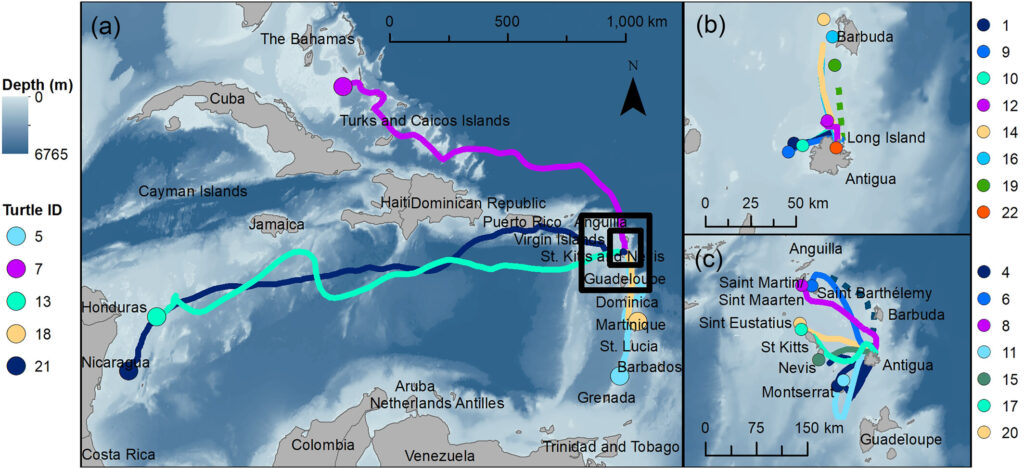
Animal-borne biologgers —
Beyond satellite transmitters, I use other types of animal-borne sensors to generate information on three dimensional movement and energy use. Here, you can see my mentee and collaborator Cameron Mullaney and me using suction cups to attach a multi-sensor, animal-borne pop-off camera to a foraging green turtle in Southern California (in this case attached alongside a GPS transmitter). This camera, manufactured by Customized Animal Tracking Solutions (CATS), allows us to observe what turtles eat, shows us how they behave within their immediate local environment, and provides a huge amount of complementary sensor data (e.g., depth, temperature, accelerometry).
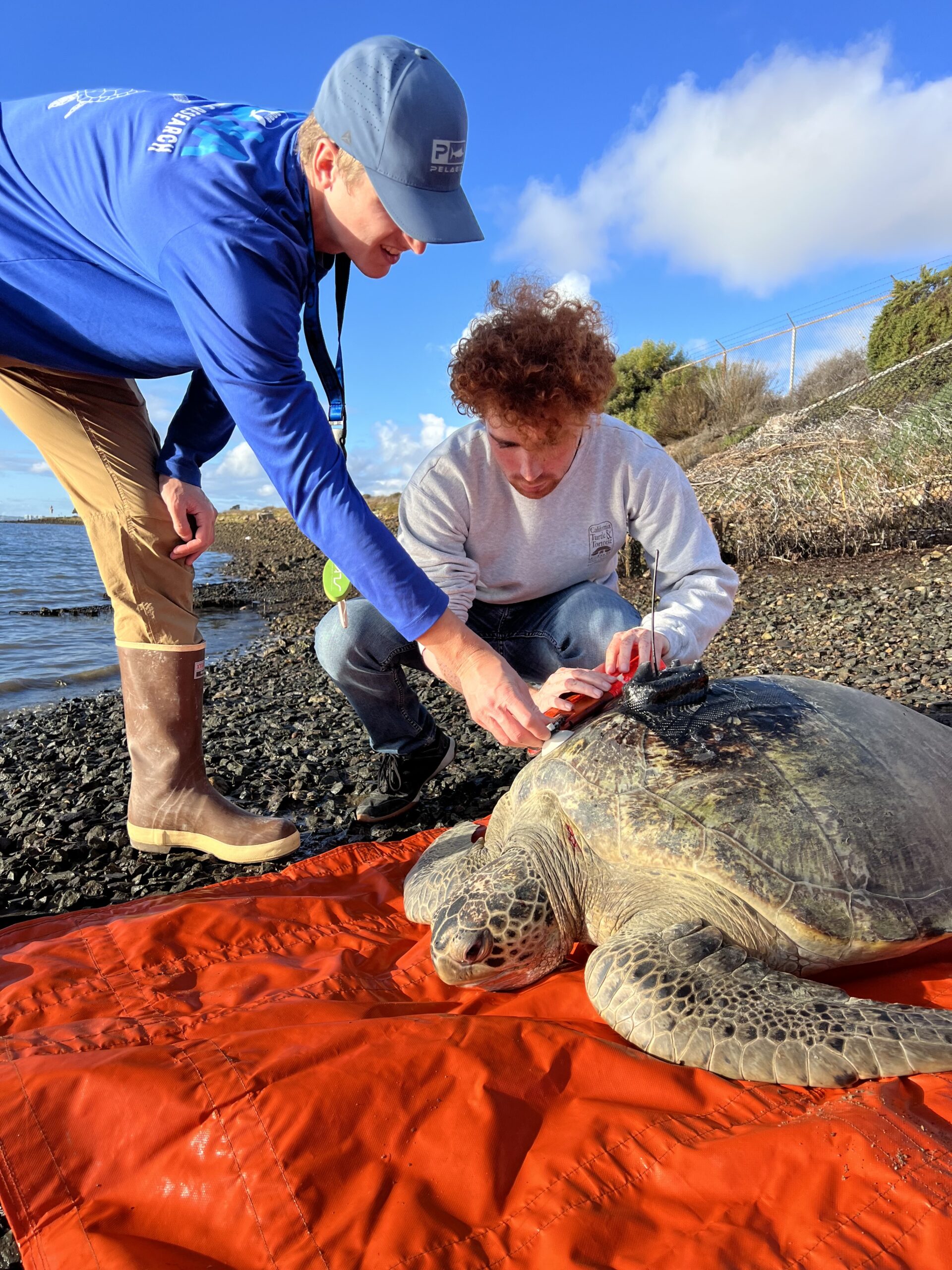
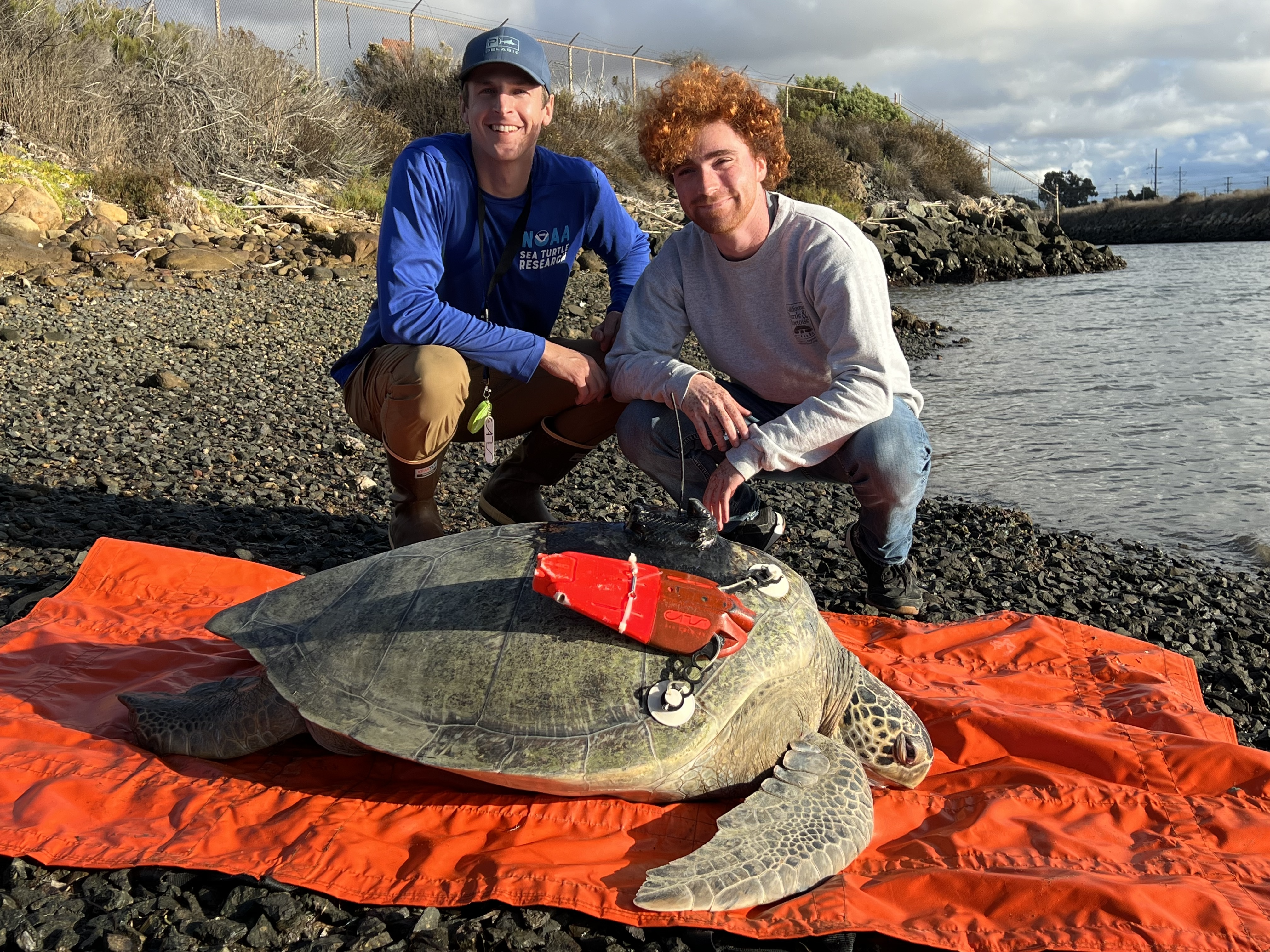
We are gaining a unique, fine-scale look at the daily lives of California green turtles. One initial finding: green turtles in San Diego Bay are quite social! You can see some evidence of this via the photo below. (All of this research was permitted under NOAA permit #18238).
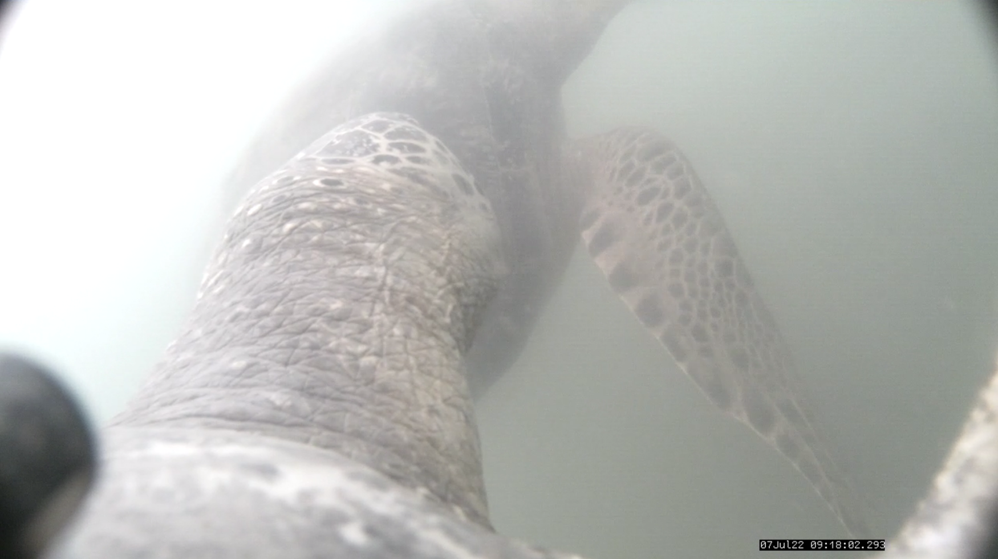
Global change
Rising temperatures —
Atmospheric temperatures have been rising at a rapid rate. This has major implications for sea turtles that exhibit temperature-dependent sex determination (TSD), where warmer temperatures lead to the production of more female hatchlings. High temperatures can also reduce survival of incubating embryos. A major goal of my research is to improve our understanding of how these thermal effects on offspring will translate to effects on population dynamics. For example, I led a review on these subjects in the journal BioScience.
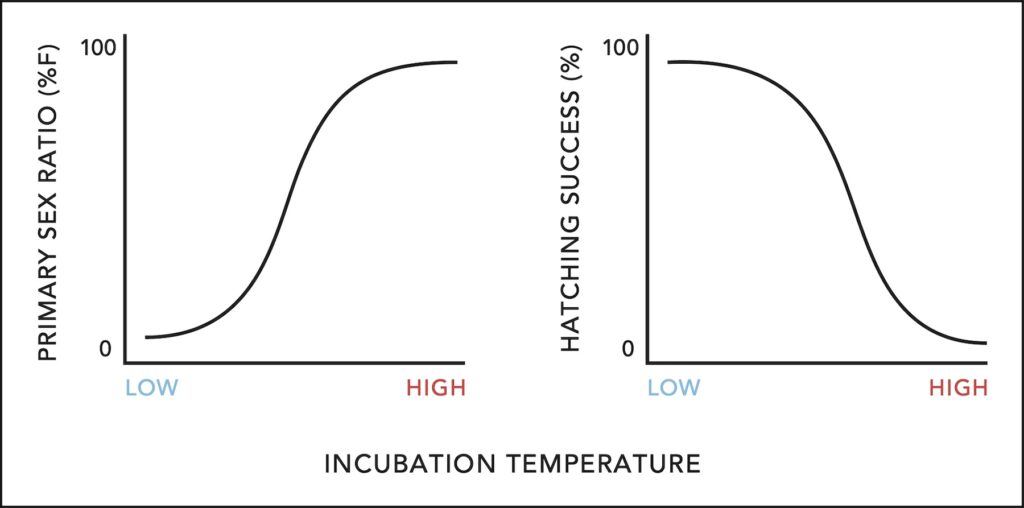
I have also led projects examining incubation temperatures in the field to understand the effects of warming temperatures on the Antiguan hawksbill population. The below graphic shows temperatures in two nests (green and blue lines) monitored with data loggers in 2015. We can examine temperatures during the thermosensitive period—when the sex of embryos is determined—and how this compares to the population’s thermal reaction norms, including the pivotal temperature that creates a 50/50 sex ratio. Extreme temperatures can lead to egg mortality, so we documented nest hatching success as well. My ongoing research asks: What environmental factors combine with atmospheric and sand temperatures to ultimately dictate hawksbill egg incubation temperatures, and what are the implications for sex ratios, hatching success, and population dynamics?

Macroalgae blooms —
Global change has featured an increase in algae blooms. Throughout the Caribbean, Sargassum macroalgae has been proliferating in unprecedented quantities and collecting in coastal nesting areas. The above picture illustrates conditions at our study site on Long Island, Antigua for much of the 2015 nesting season. Sargassum accumulation has ramifications for both nesting adults and emerging hatchlings. I have led several projects aimed at describing the effects of Sargassum in Antigua, ranging from impacts on nesting patterns (see this short paper, this conference paper, or this article) to egg incubation environments (see this article). Importantly, the Sargassum issue appears here to stay! I continually seek out opportunities to engage with stakeholders to discuss adaptation strategies. Indeed, it is something we may have to learn to live with, rather than “fix.”

Other research areas in marine ecology
Stable isotope ecology —
You are what you eat! Ecologists take advantage of this relationship by using stable isotopes as ecological tracers (more on this below). In my postdoctoral position I am working with global leaders in sea turtle stable isotope ecology to employ isotopes as spatial tracers, that is, to infer where animals move to/from. Normally, we have to use expensive tracking technology to do this, but stable isotopes can be a tool for inferring movements from just a low-cost, minimally invasive tissue sample.
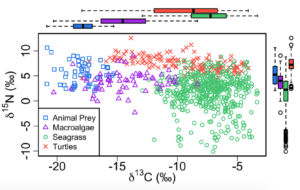
Isotopes of a given element are very similar—they will have the same amount of protons but what differentiates them is their number of neutrons. For example, with carbon, we typically focus on the stable 13C and 12C isotopes, where 13C is heavier by one neutron. Stable isotopes of any element remain unchanged (i.e., do not decay) as they transition through sources and structures in nature. Sources can be things like plant and animal tissues, or even different water sources, among others. Beyond the stability of stable isotopes, what makes them especially useful is that different sources have unique rates of discrimination against heavy isotopes. In other words, distinct sources will tend to incorporate less of heavy isotopes, and do so at a consistent rate. This consistency can result in a unique ratio of heavy-to-light isotopes for the source, creating a unique signature that we can measure and trace. For instance, a seagrass species at a given location will have a fairly consistent ratio of 13C:12C (aka δ13C), and this ratio should be distinct from an algae species in the same area. Animals that eat these food sources will incorporate the carbon ratios into their tissues, informing our estimates of what they feed on. In this general way, the stable isotope ratios can be used to trace the flow of energy through food webs.
